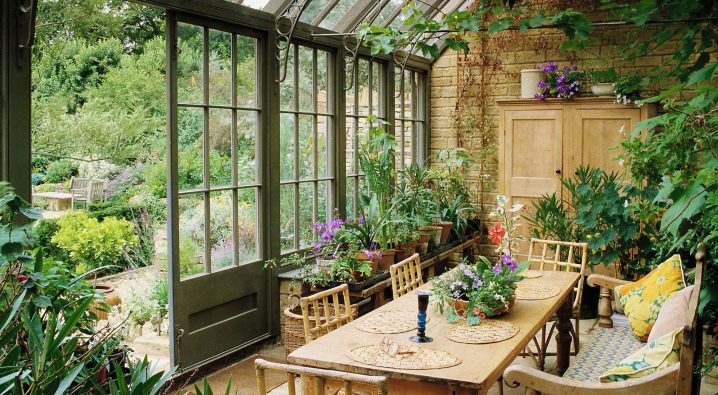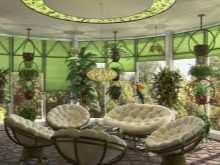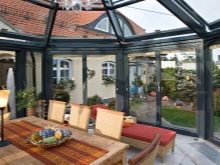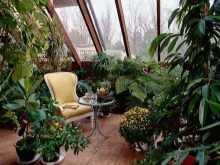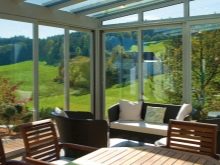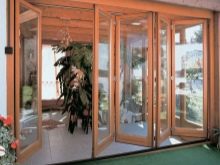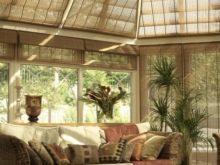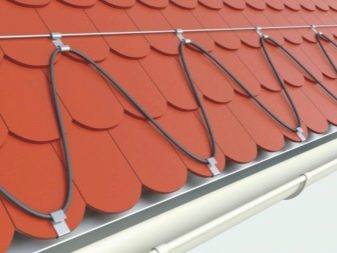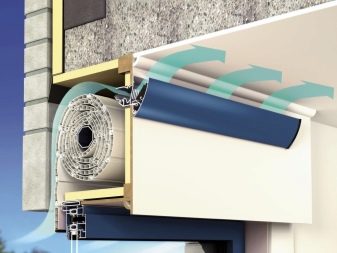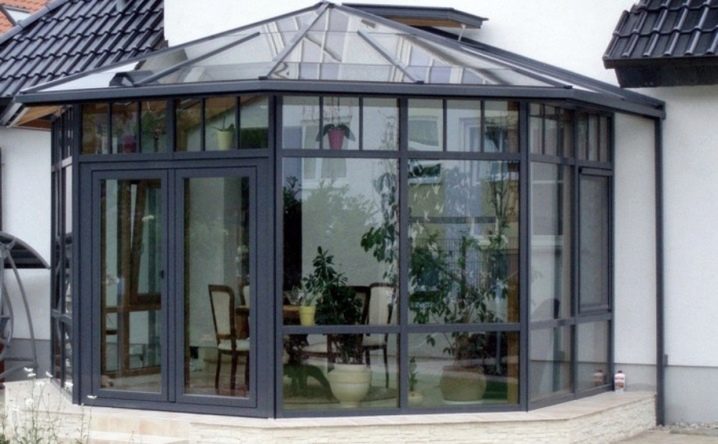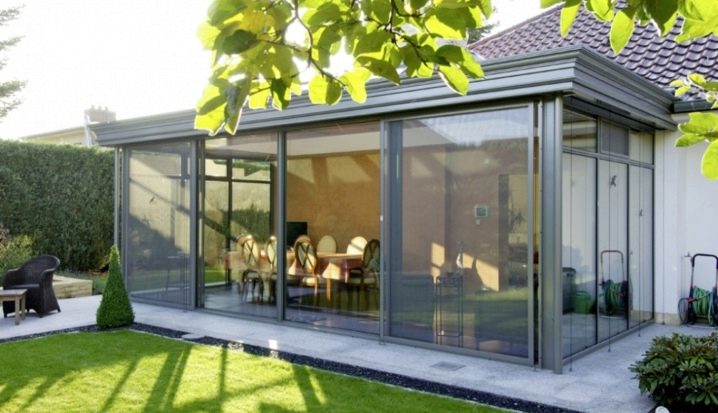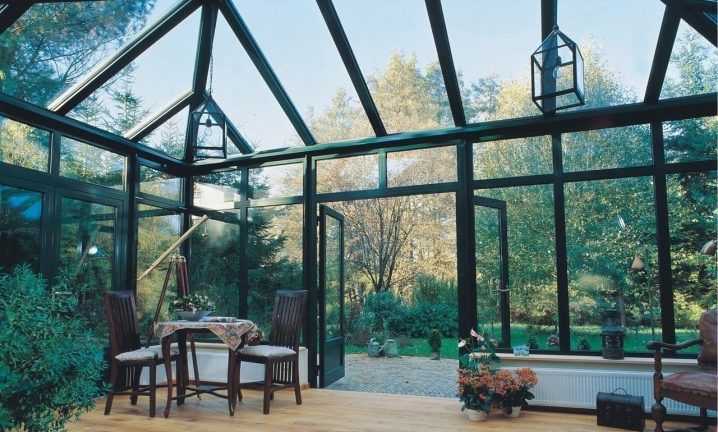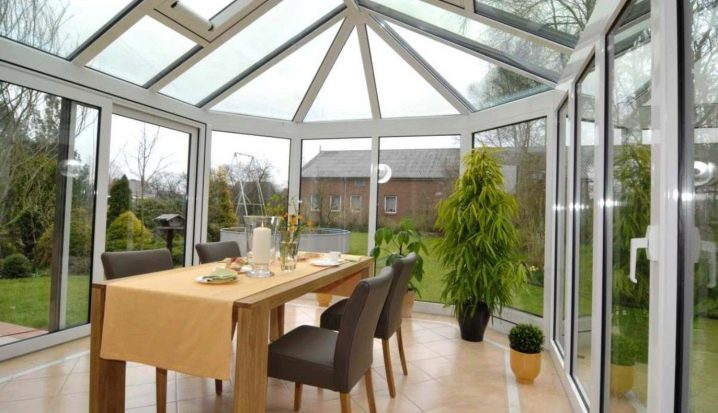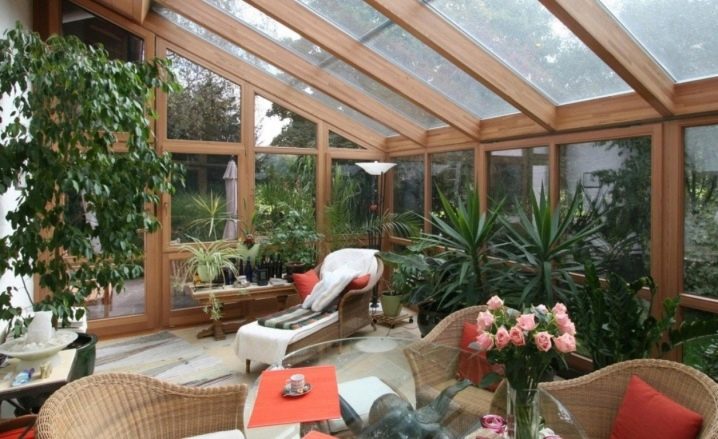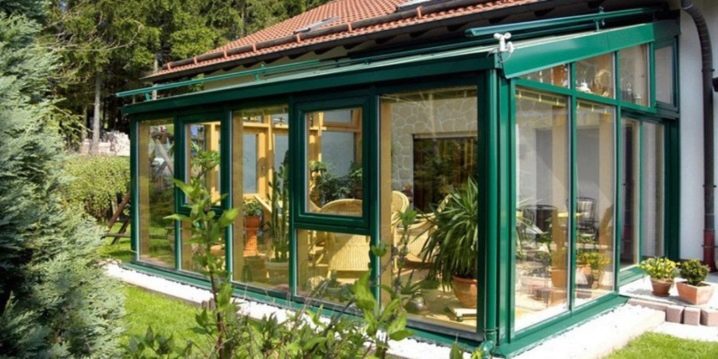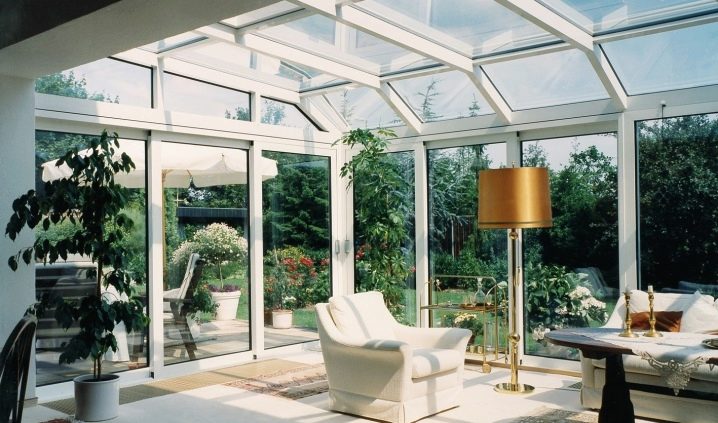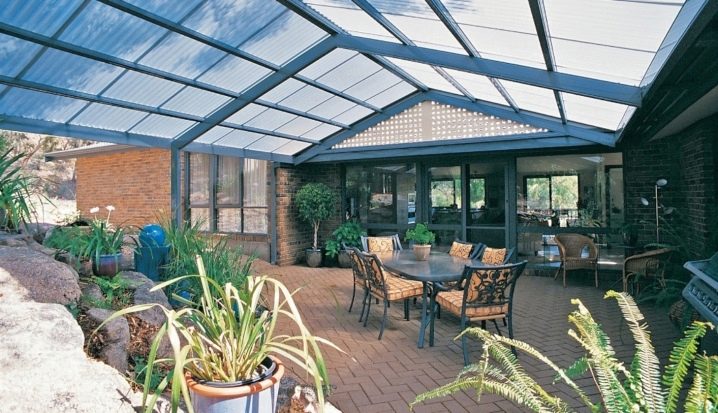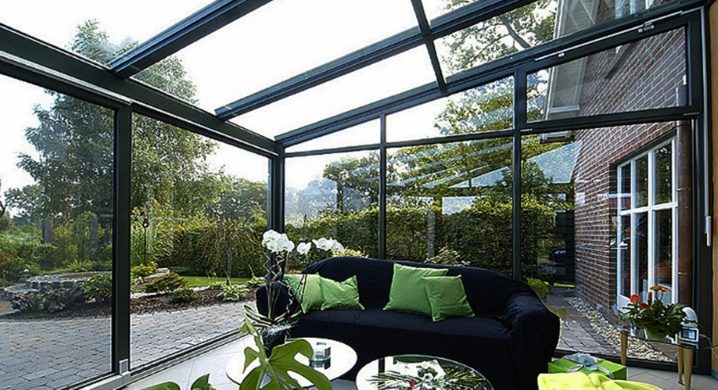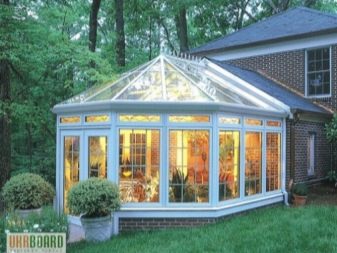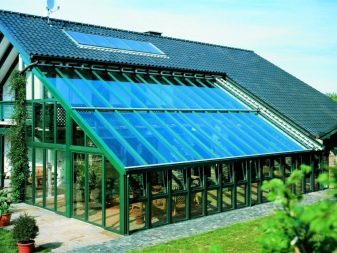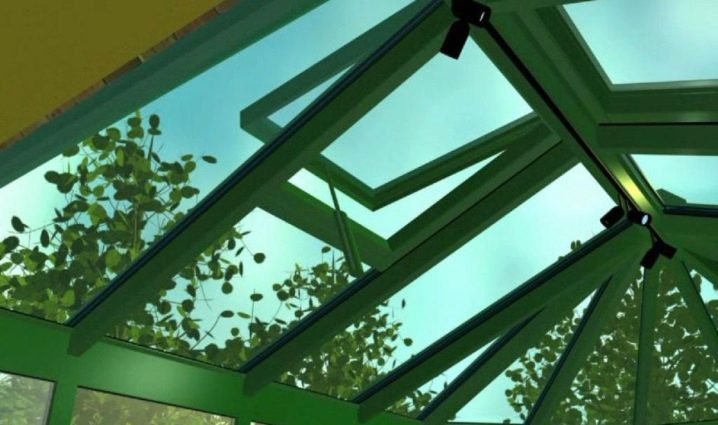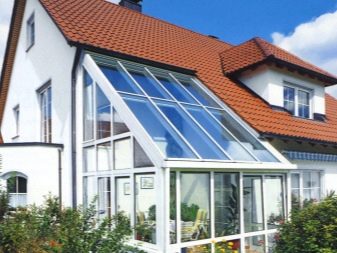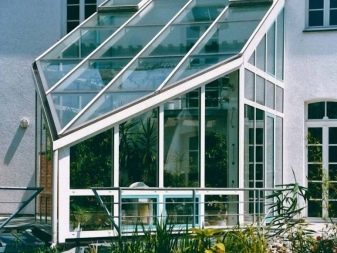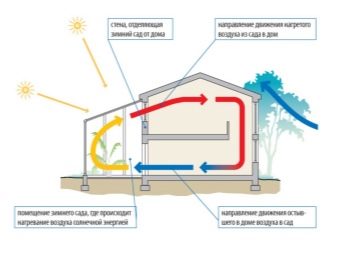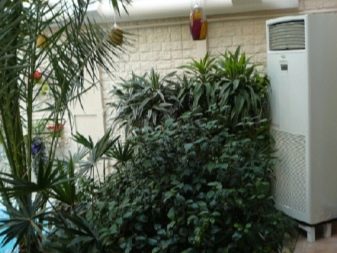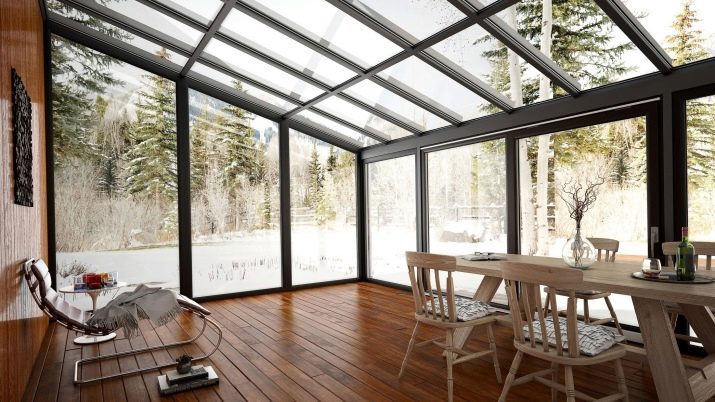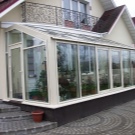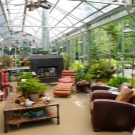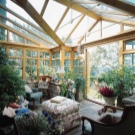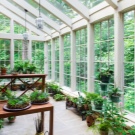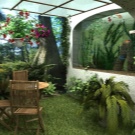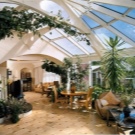Glazing of winter gardens
The winter garden is actually the same greenhouse, only the first option is intended for recreation, and the second is for the cultivation of greenery. In the cold season, the winter garden turns into a real center of the house, becoming a favorite meeting place for family members and friends. In our country, due to the peculiarities of the climate, such premises became popular not so long ago. And the key role in the organization of this type of space is played, of course, by the glazing system.
Special features
The front glazing bears in itself not only an esthetic component, but also quite functional. After all, who does not want to relax in the winter in a green "oasis", where it is light and warm and overlooks the beautiful snow landscape? Particularly impressive in this case will look panoramic windows with large-scale jumbo-glass.It is better to make the doors sliding, which will make it possible in the summer to create the effect of unity with nature. And to protect the garden from the heat and the sun, you can use blinds.
Also modern winter gardens can be equipped with such innovative systems as automatic heating of the roof, maintaining the indoor climate, self-regulating ventilation system and tinted double-glazed windows.
If you wish, you can choose a frameless glazing, but at the same time the heat will be kept worse.
Materials
Consider the basic materials that are used to create glazed winter gardens.
Aluminum
According to statistics, 80% of customers use aluminum profiles when glazing a winter garden - it is inexpensive and at the same time very high quality and durable, so you don’t have to reinforce walls and build a frame.
This profile has many advantages:
- ease of construction;
- affordable price;
- saves heat;
- looks good;
- as much as possible passes a light stream;
- durable;
- fireproof;
- resists vandalism.
Aluminum, unfortunately, conducts heat, so in the conditions of the Russian climate use special profiles with thermal insulating insert.Manufacturing companies promise that the aluminum window profile will serve you faithfully for about 70-80 years, while the assembly is carried out just a day, and if necessary, aluminum frames are easy to disassemble with your own hands and move to another place.
Use PVC profile and wooden frames
Less popular, but also used in the glazing of the winter garden is PVC profile and wooden frames. The advantage of plastic glazing is that such windows perfectly retain heat and are suitable for both single-chamber and dual-chamber glass. But this type of glazing is not suitable for the panoramic winter garden. In addition, PVC structures are not able to perform the role of a full-fledged frame, so you have to use a steel "skeleton" for the roof.
The most eco-friendly and safe for health option, of course, wooden frames. But this is not a cheap pleasure, besides they need special care.
Glass
As for the double-glazed windows, single-chamber with a special coating, which additionally retains the heat inside the room, are quite suitable for the winter garden.
Experts do not recommend using double-glazed windows because of the weight of the structure, because the glazing area of the winter garden is large enough and it’s better not to risk it.installing massive glass.
If security is paramount to you for glazing, you can use tempered glass and anti-vandal glass. This means that with a possible impact, the glass will not break into sharp fragments, but will fall apart into small blunt particles. This is especially true for panoramic and roof glazing.
Another option: plexiglass as the inner glass, triplex instead of the outer and polycarbonate sheets at the roof. The only drawback of polycarbonate is that it transmits light worse, but this does not at all interfere with being in the winter garden.
Recently, manufacturers have offered very innovative materials for glazing conservatories.For example, with the use of glass, which allow you to adjust the level of illumination in the room. But these are non-standard and expensive projects that are available, as a rule, for exclusive designer interiors. You can also use tinted glass, and if it has a mirror effect, then you will not be visible from the outside.
Roof
The glazing process of the winter garden would look simplistic if it were necessary to put the windows only around the perimeter. But the real winter garden suggests the presence of a glass roof.Therefore, it is worthwhile to carefully approach the choice of material for glazing, which must withstand bad weather and numerous winter precipitations. In addition, glass elements must withstand the weight of a hard roof.
Important advice - make the angle of the roof at least 60 degrees, this will help the sediments not to linger and, accordingly, do not create an additional load on the glass.
If you choose double-glazed windows, the inner glass should be triplex. (by analogy with what is in cars), then the chances of injury, if the glass is broken, are reduced to zero. For the glazing of the roof fit and sheets of cellular polycarbonate, which is lighter than double-glazed windows and allows you to do without an additional frame. Polycarbonate is durable and resists intense exposure to ultraviolet and infrared rays, it can be both standard white and tinted. Please note that this material is sensitive to temperature changes, so do not attach it to the guides too hard.
Ventilation
Ventilation of the winter garden provides air intake duct and exhaust duct.For the purpose of inflow, windows and vents are used around the perimeter, and the function of exhausting is performed by hatches on the roof. The total area of windows and hatches is usually about 10% of the glazing area of the winter garden.
It is advisable not to be limited only to the side windows and window vents, but also to provide split-level windows, which allows for a natural air exchange in the garden.
Some manufacturers propose to use special "passive" ventilation systems.when the valves are installed under the ceiling, blown through the convection method. Similarly, indoor ventilation is performed approximately every 15 minutes. Such ventilation is especially convenient if you cannot air the winter garden every day. And in the summer, on particularly hot days, you can additionally use air conditioning, which in the cold season will also serve as an excellent service as a winter garden heater.
Having attached a winter garden to your home, you will surely become a little closer to nature, improving the space for rest and improving the quality of life of your household. Despite the fact that the glazed facade looks brittle in appearance, it can withstand not only the vagaries of weather and all kinds of precipitation, but even a blast wave or an earthquake of average magnitude.
Such strength is achieved with the help of special sealants.which turn glass, metal and stone into a single monolithic structure. Therefore, approach the winter garden glazing process as responsibly as possible by inviting the best specialists and using innovative materials whenever possible.
Learn more about all the nuances associated with the winter garden, you can from the following video.
